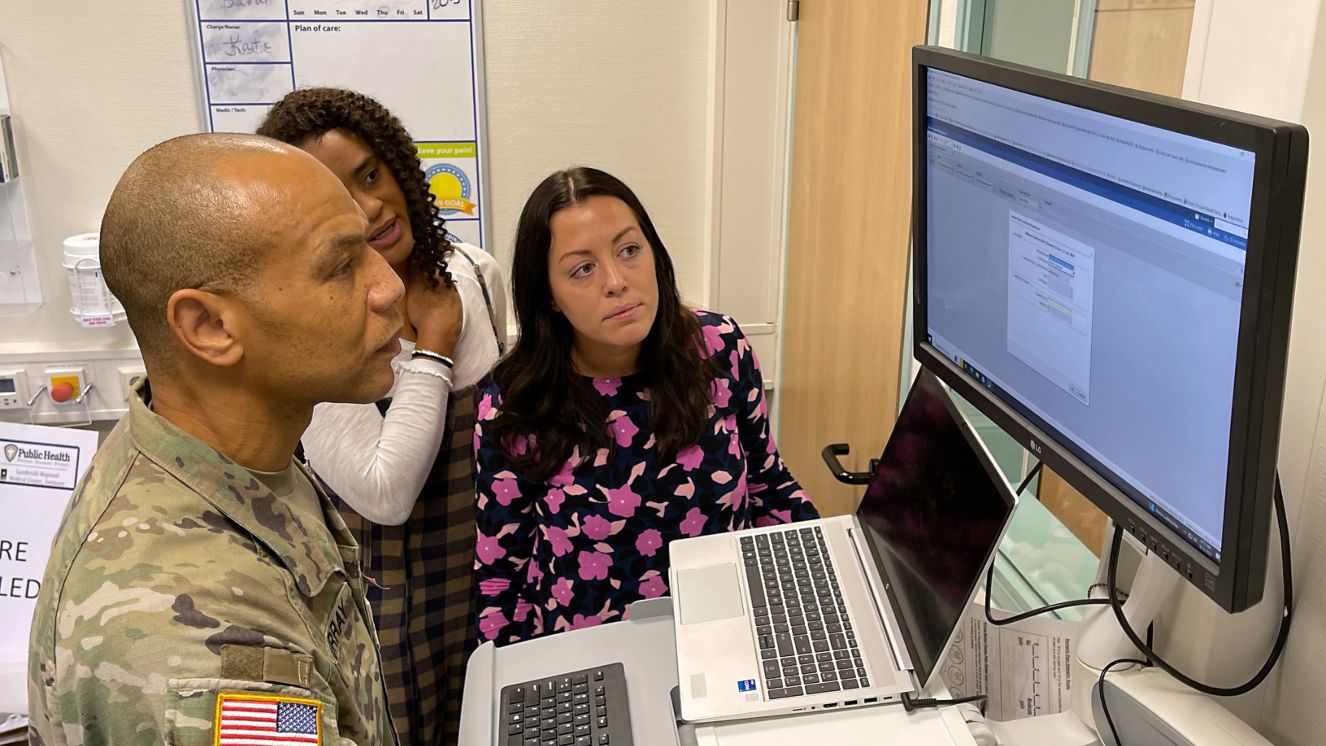HOW TO SET UP A HOME OFFICE: 7 TIPS TO ORGANIZE & CRUSH CIVILIAN WORK

Introduction
You’re officially on the civilian side with the possibility of working from home. How do you go about setting up a home office that will work for you and the rest of the family using the same home? It’s especially important to consider how to set up a home office when you and your spouse are both working from the same physical location. Getting to work from home is an increasingly viable option for Veterans and Veteran spouses. It can even be a powerful career solution for military spouses of active-duty service members. But it's not necessarily as easy as plugging in your laptop and getting to work right away. Setting up a home office requires advanced preparation and careful thought about what you want to achieve. Read on to learn more about some of the best tips to get the most out of your home office and how to set it up to work for you long-term. More like this: The Power of Job Networking: Why You Don’t Necessarily Need a Resume
1. Pick a Quiet Area
If you’re searching for how to set up a home office, you need a space where you can work uninterrupted. Depending on the space available to you in your current home, this could be anything from a converted closet to an unused utility room to an entire bedroom. This is a great example of flex room office ideas. What is not recommended is to use a home office that has other uses throughout the day. For flex room ideas to work, you should be able to work quietly and peacefully during your work hours, whatever they are. You have more options with flex room ideas when you work for yourself than you do as an employee in a 9-5 role. For example, setting up a corner of the kids' playroom or even at the side of a spouse's study when the spouse uses this room every single day can get disruptive if you need to be able to have quiet time. Quiet time is important not just for obvious uses like recording a podcast or watching video tutorials without disruption, but it is extremely important when you're going to appear on video meetings. How to set up a home office means thinking about what daily life in that room will be like and whether that’s conducive to you getting things done.
2. Don’t Forget Background Noise
Background noise and visual background distractions can be a big problem for remote work, particularly when it comes to how you're perceived in an employment situation or by customers of your business, if you work for yourself. Try to select a room that will be out of the way of typical foot traffic and will allow you to work continuously without interruption. Many people choose one of the smallest rooms in their house so that they do not waste space. It is also best if this room has a door that can completely close. This is not only for preventing those important distractions we talked about above but also for creating a line between your personal and your work life. Many remote workers and self-employed individuals understand how difficult it can be to separate themselves from their work. After all, with a laptop at home, you can visit any room in your house, and this can make it difficult to disconnect. Having a smaller room with a door that closes makes it easier for you to build a habit of working.
3. Complete Your Office With The Basics
Now that you’ve picked the room, you need to know how to set up your home office with décor. One of the most important things you can do when working from home is to train your brain for what it means to be working. Creating a regular routine is certainly an important part of this, but the structure of your office is important, as well. Make sure that you have a comfortable work desk chair or standing desk – bonus points if you can have both and convert your desk back and forth between the two. You don't want to clutter your office with too many materials, but surround yourself with the things that you need to do your work, such as a scanner or printer, your headset, your webcam, and any important file folders that you might need throughout the day. Keeping a clean desk and a clutter-free home office will make it easier to focus when you get into the groove. Be aware of what's behind you, as well. This is especially important if you'll be doing a lot of video meetings because you'll need to be mindful of what other people see in the background. To decorate your room, choose inspiring colors and art that also look professional. You can fully decorate the other side of the computer screen, which will not be seen by people, however you like. Aim for simple and well-lit backgrounds so that you always show up well on video. Where possible, try to use natural light to enhance the area. It is always recommended that light be in front of you, so you might put your computer up against a window to get the benefits of the light coming through without having the outside be a distraction in the background. Suggested content: Veteran Resume Tips: Turning “Military-You” Resume -> “Civilian-You” One
4. Support Yourself
You might put in some long days working for yourself or for someone else from your home office, so it's very important that you invest in things that will help you be able to stay focused for long periods of time. Think about things you can add to your office, like blue light glasses, an ergonomic keyboard, or additional back support on your chair. These small steps will not replace things like the fact that you should get up and take breaks every hour or so to reset, but they can definitely go a long way towards making this a more conducive atmosphere. Remember that when learning how to set up your home office, it’s not a one-and-done process. You can always tweak or move things as you learn what works for you. There are many home office ideas online that you can use to get inspired.
5. Decide On Ritual Practices
It might seem silly to think about rituals when working from a home office, but this is a great way to train your brain that it's time to be in work mode. Some people start the day with a nice iced coffee, for example, or light a candle to signify the beginning of work. Over time, your brain gets conditioned to recognize that it's time to snap into work mode. Investing in yourself in this way can reduce a little bit of friction in getting the day started. Ultimately, you will want to feel pleasant, supported, and productive when you step into your home office, so be committed to doing regular decluttering, too. Even if it is as simple as getting rid of the coffee cup or tea mug that you bring in every day, try to keep trash and food out of this area so that it feels more like a productive home office.
6. Invest In Storage
If you're going to keep more materials than just a basic desk and decor in the room, use proper storage so that you have quick access to it and it is not cluttered. Having additional materials lying about or piles of paper can be problematic for focusing and getting work done. The best thing to consider as you learn how to organize a home office is that less is more. If you love colors, consider buying cubes to store papers or other items in. This can enhance your décor and can even work in the background without making things look cluttered. This is really important if you’re taking flex room ideas to the max by using a corner or a section of a room that has another purpose.
7. Train Your Family
One of the most important aspects of running a home office is training your family. Especially if this is your first foray into remote working, you need your family members to understand when they can and can't interrupt you. A simple door hanger that you turn to red or green can give kids the sign that it is okay for them to step in or knock on the door to interrupt you. You can flip it to red when you're doing meetings or heads-down focus work. Bear in mind that it is completely normal for it to take some time for your other family members to get used to what to expect from your home office. Related read: 15 of the Top Work-From-Home Jobs in 2022 for Veterans & Spouses
BY LAURA BRIGGS
Laura Briggs is a Contributing Writer at VeteranLife.com.
Laura Briggs is a Contributing Writer at VeteranLife.com.



